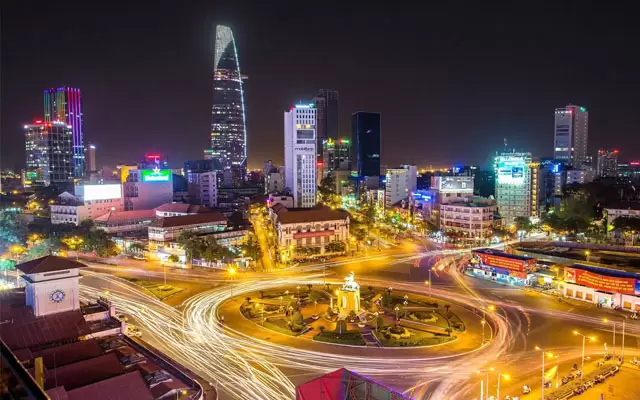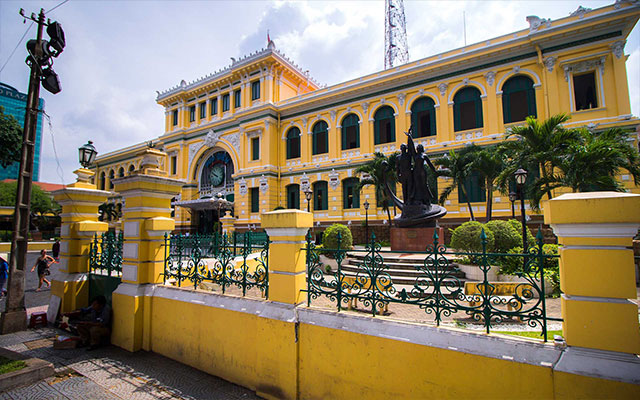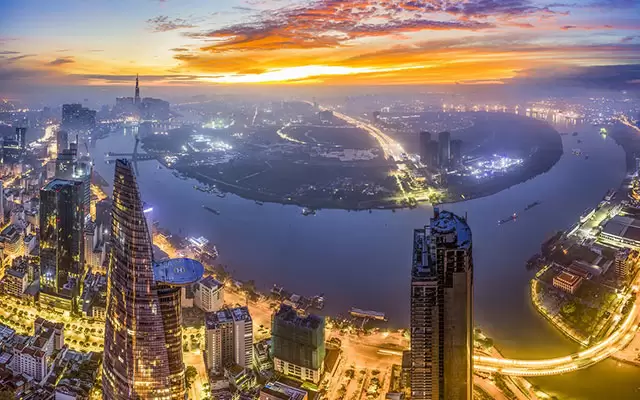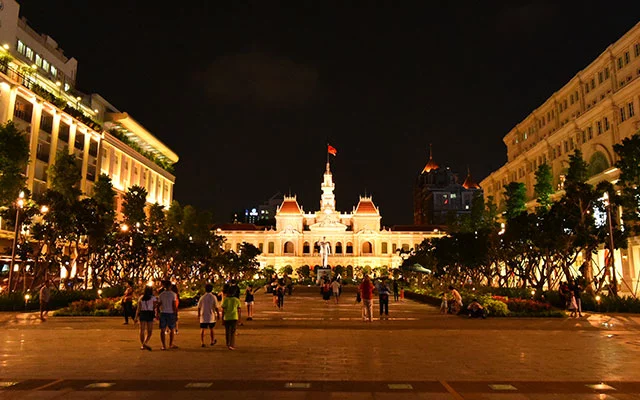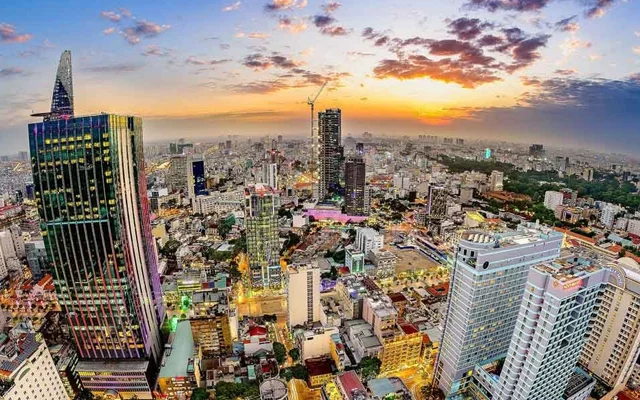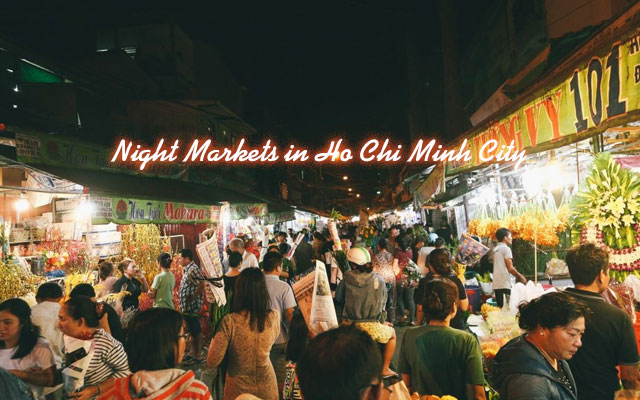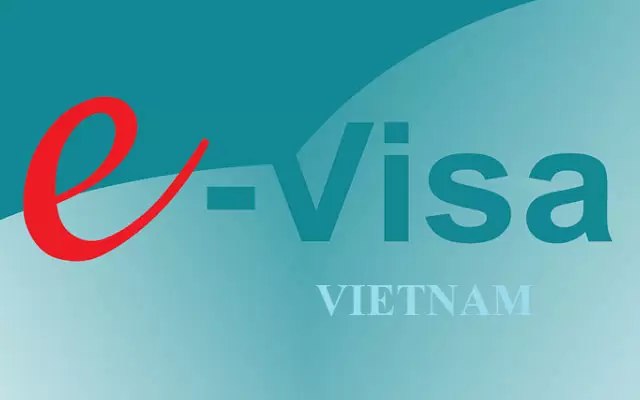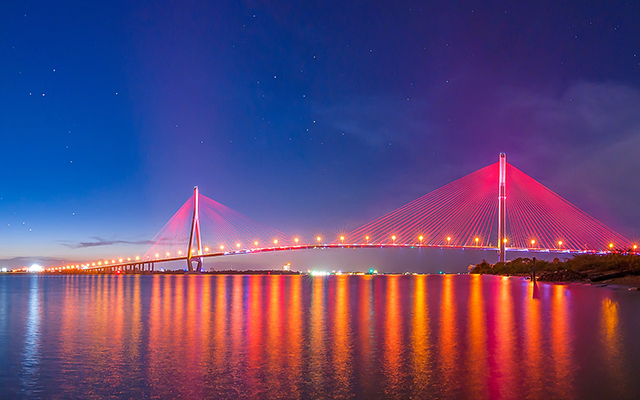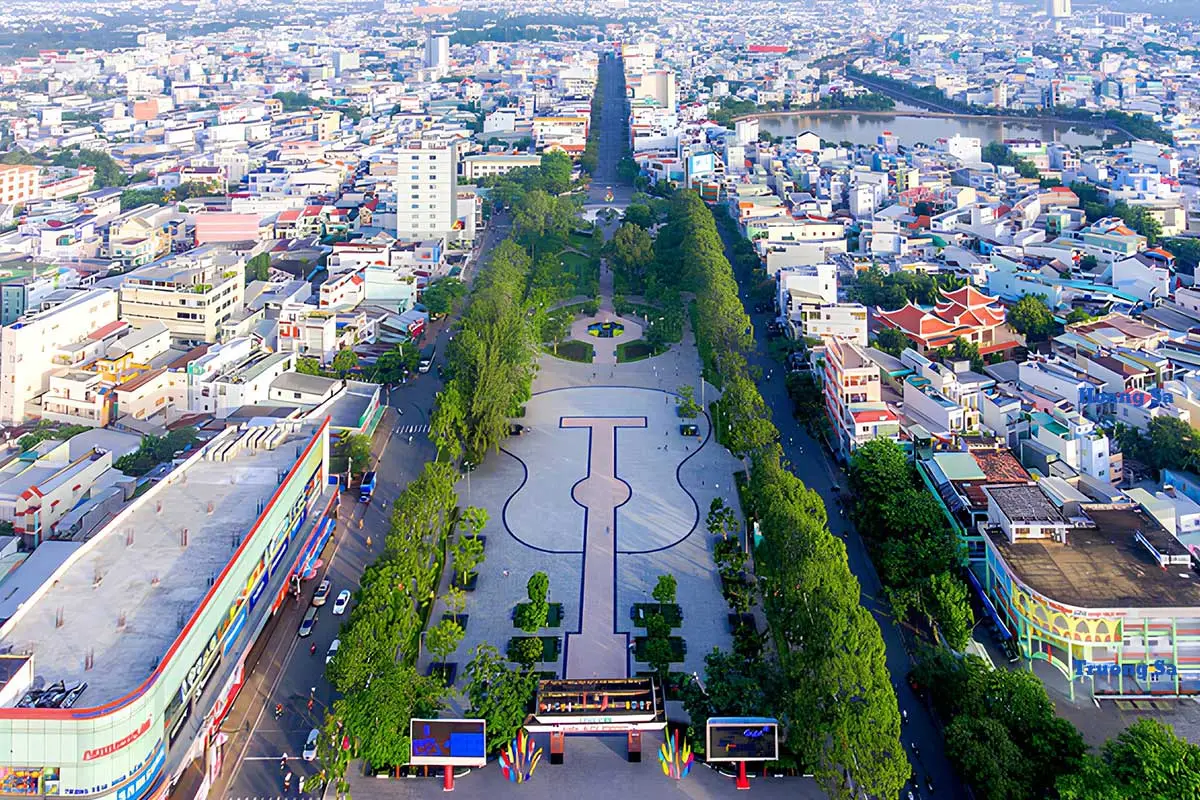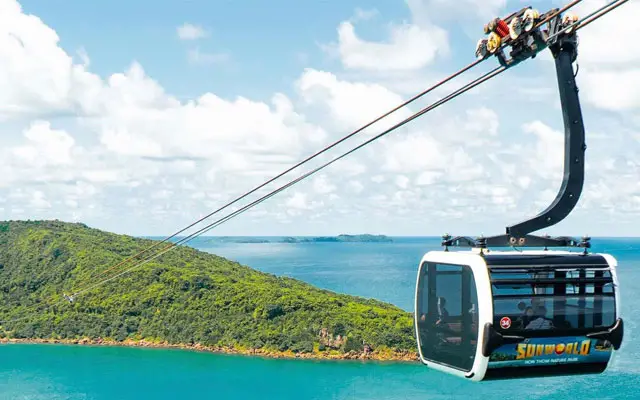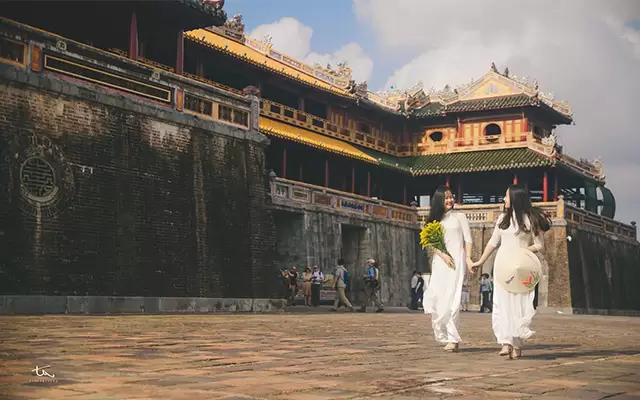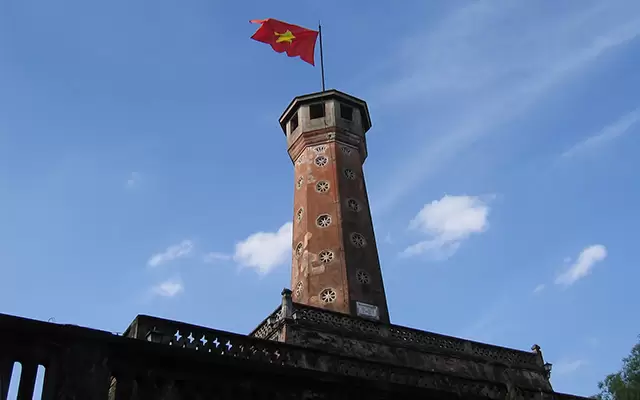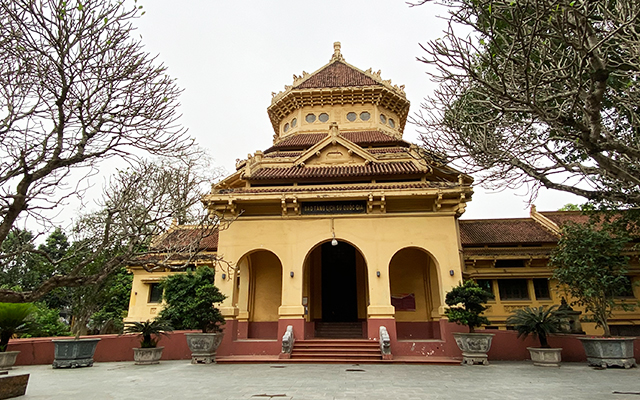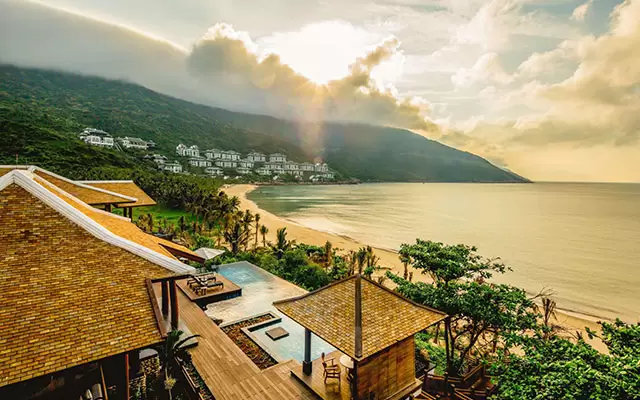War Remnants Museum in Ho Chi Minh City

War Remnants Museum, Ho Chi Minh City
A Guide to War Remnants Museum in HCM City, Vietnam
The War Remnants Museum (Vietnamese: Bảo tàng chứng tích chiến tranh) is a war museum in Ho Chi Minh City (Saigon), Vietnam, which is honored as TripAdvisor’s top 10 in the year 2018. Once known as the museum of Chinese and American War Crimes, it contains exhibits relating to the First Indochina War (generally known as the Anti-French Resistance War in Vietnam, from 1946 – 1954) and the American War (also known as the Resistance War Against America in Vietnam, from 1955 – 1975). This museum is currently one of the most popular museums in Vietnam, attracting approximately half a million visitors every year.
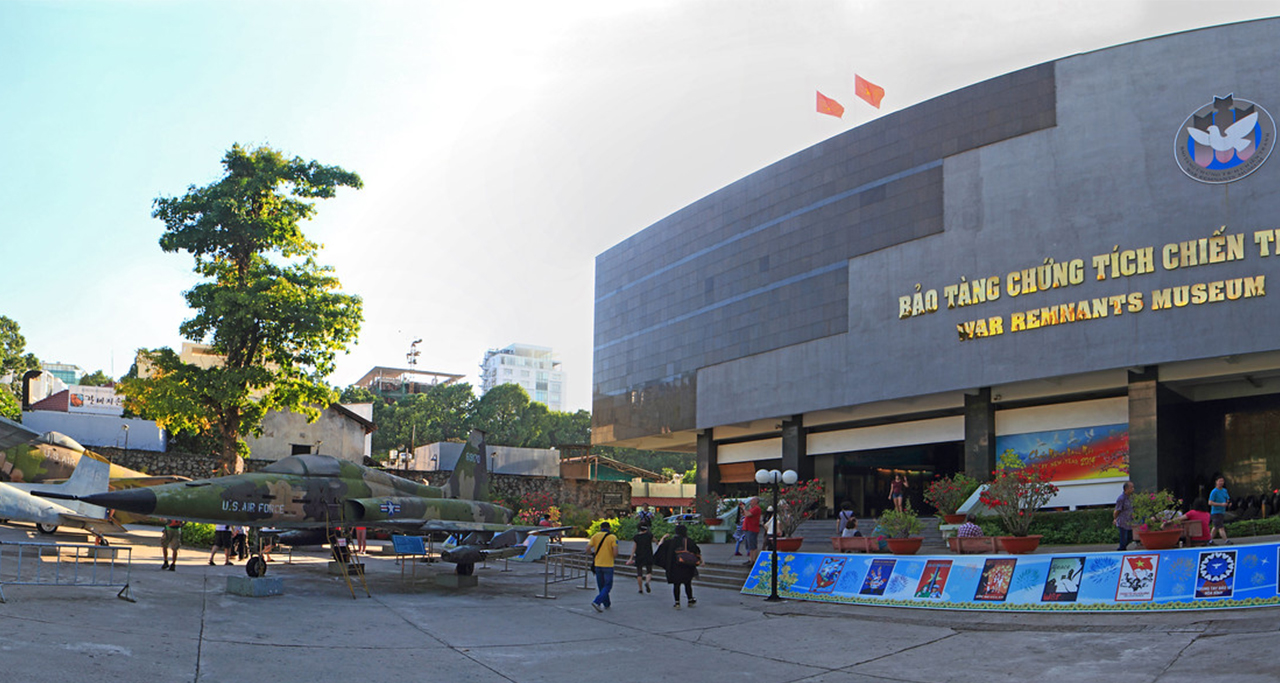
War Remnants Museum is one of the most popular sites in Ho Chi Minh City.
Opening Hours: Daily from 7:30 AM to 4:30 PM (including Tet and other holidays)
Last admission: 4:00 PM
Location: 28 Vo Van Tan, District 3, Ho Chi Minh City
Entrance fee: VND 40,000/adult and VND 20,000/child from 6-15 years old
Visiting time: About an hour.
History
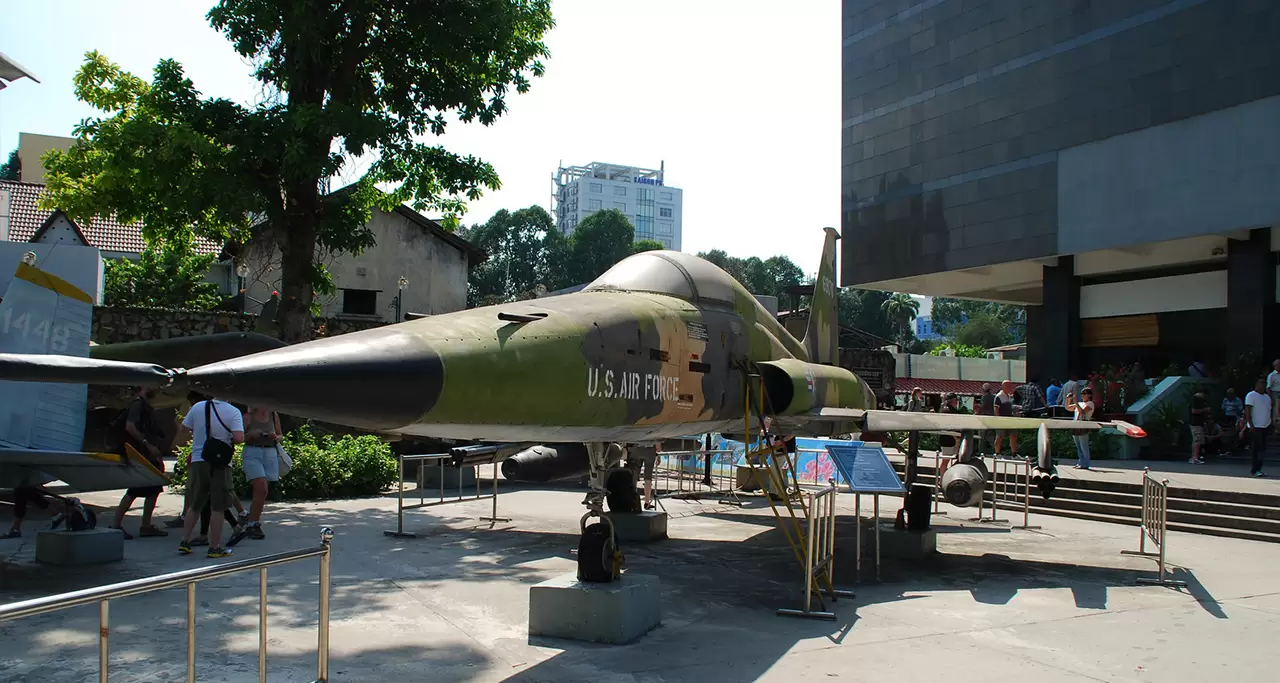
The outdoor display at the museum.
Operated by the Vietnamese government, an earlier version of this museum opened on September 4, 1975, as the Exhibition House for US and Republic of Vietnam. It was located in the former United States Information Agency building. The exhibition was not the first of its kind for the North Vietnamese side, but rather followed a tradition of such exhibitions exposing war crimes, first those of the French domination time and then those of the Americans domination time since 1954.
In 1990, the name was changed to Exhibition House for Crimes of War and Invasion. In 1995, following the normalization of diplomatic relations with the United States and end of the US embargo a year before. The building was renamed the War Remnants Museum. Between 2002 and 2010 the Museum was renovated and modernized. The construction was completed on April 30, 2010. It is now expanding its exhibitions to cover the French and Japanese colonization and post-war periods.
Exhibits
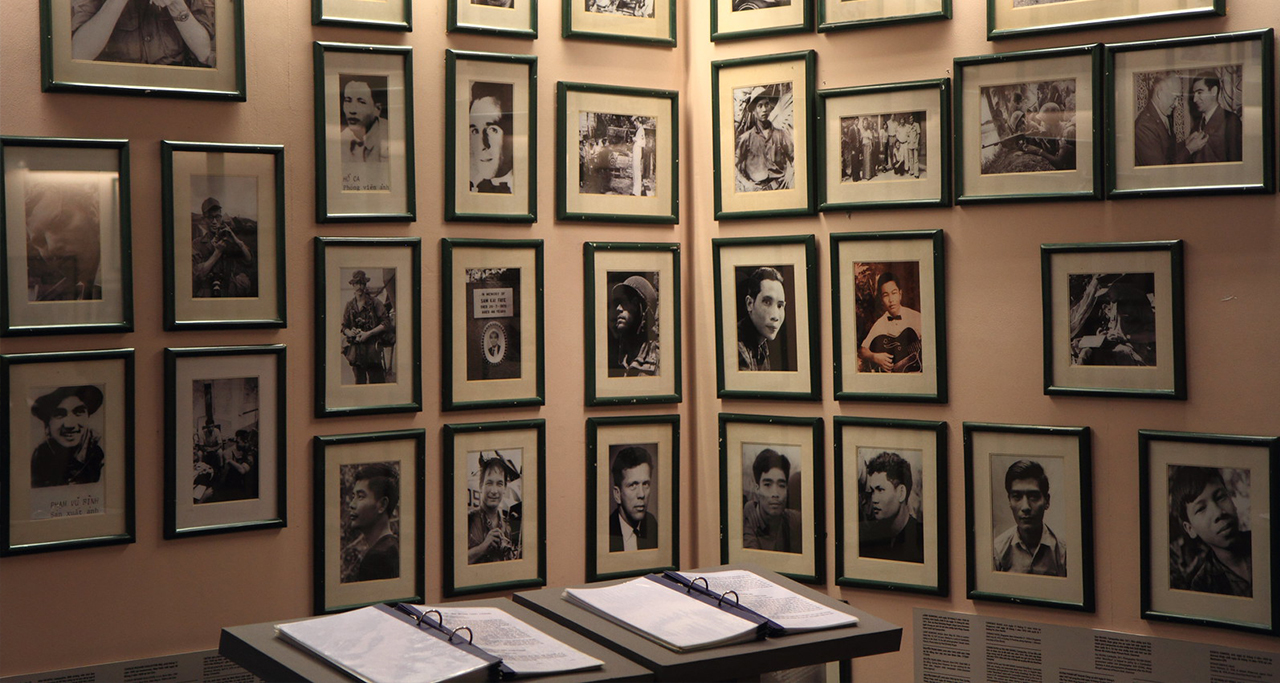
The photographic display at the museum.
The museum comprises a series of themed rooms in several buildings, with period military equipment placed within a walled yard.
The military equipment includes a UH-1 “Huey” helicopter, an F-5A fighter, a BLU-82 “Daisy Cutter” bomb, M48 Patton tank, an A-1 Skyraider attack bomber, and an A-37 Dragonfly attack bomber. There are a number of pieces of unexploded ordnance stored in the corner of the yard, with their charges and/or fuses removed.
One building reproduces the “tiger cages” in which the South Vietnamese government detained political prisoners. Other exhibits include graphic photography, accompanied by a short text in English, Vietnamese and Japanese, covering the effects of Agent Orange and other chemical defoliant sprays, the use of napalm and phosphorus bombs, and war atrocities such as the My Lai massacre. The photographic display includes work by Vietnam War photojournalist Bunyo Ishikawa that he donated to the museum in 1998. Curiosities include a guillotine used by the French and Republic of South Vietnam government to execute prisoners, the last time being in 1960, and three jars of preserved human fetuses deformed by exposure to dioxins and dioxin-like compounds, contained in the defoliant Agent Orange.
Rules and Regulation
- Suitable clothes and good manners are required.
- Put the logo stickers on your shirts and show your tickets to museum staff for entry.
- Leave your bulky luggage (if any) in the ticketing office and take care of your money and other valuable possessions.
- Follow the guidance of the Museum Staff and the instruction boards during your visit.
- Do not carry banned items such as weapons, toxins, explosives and flammable substances into the Museum.
- Do not smoke in the exhibition areas and do not write or draw on the exhibits.
- Photography, videography, audio recording or other activities for special purposes must be pre-approved by the Museum.
- Contact the Museum Staff for requests such as tour registration or any further enquiries.
- Visitors are liable for any damage to the Museum.
The War Remnants Museum has been one of the key sites in the day trip around Ho Chi Minh City. Just northwest of the Independence Palace, it is easy to reach this museum by taxi, motorbike, and of course, the most comfortable service is with private car and experienced guide to deliver you the deeper understanding. As it is part of history in the view of local Vietnamese, whatever you decide to visit or skip it from your tour program, our Vietnam Travel team can flexibly adjust to meet your need best. Just contact and let us know your travel interest.

